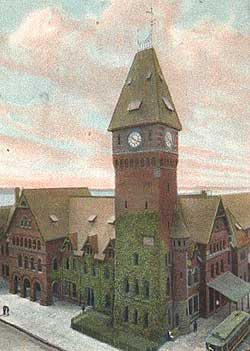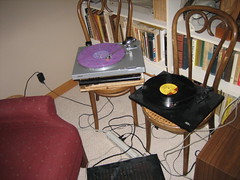Free Advice
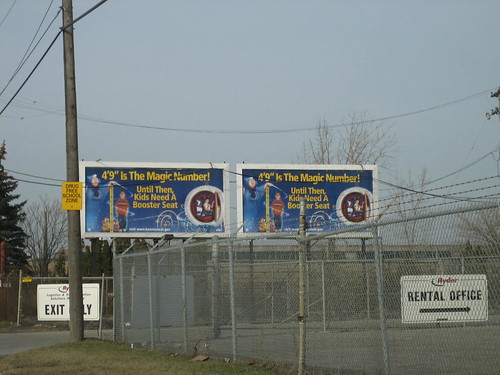
Photoshop? No. Sadly, a decision was made to place these identical billboards next to each other. Notice the sign in the foreground proclaiming a "Drug free school zone". There are no schools currently operating in this area. The street is lined with abandoned and occupied industrial buildings and leaning street lamps.
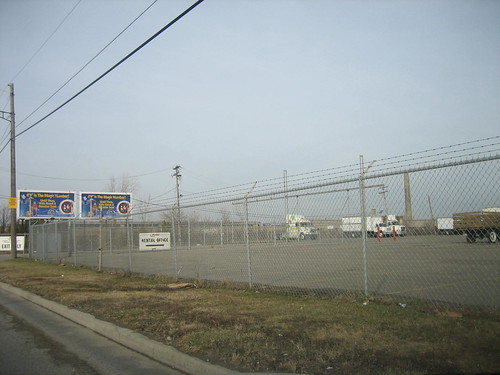
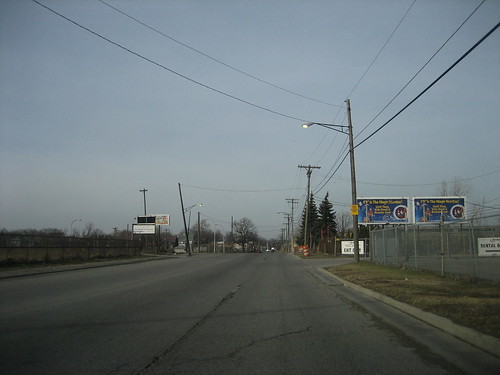
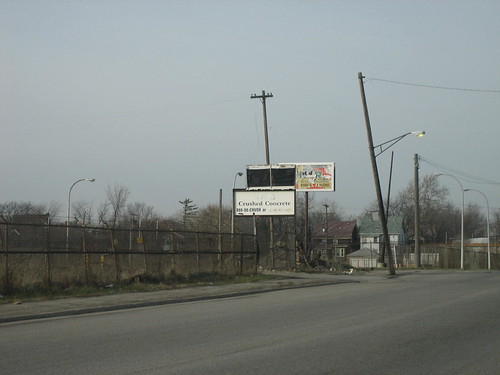
Across the street
OK, let's forget for a moment the poor decision to place the same message next to itself. Let's forget that there are no schools along this avenue and probably not very much parent traffic. Let's ignore how difficult to discern the message, "4"9' Is The Magic Number!" is. One question remains: how many parents in this neighborhood can afford to buy child seats for 4"8' children?
Car seat prices range from about 50 to 300 dollars.
The boosterseat.gov website advertised on these billboards includes a link, "Where can I find a booster seat?" It suggests, "...stores that sell toys, children's furniture or other items aimed at parents" and to "Try typing 'Booster Seats' into your favorite search engine."
I know of only one effort to provide car seats to low-income families. A local auto parts chain partners with the Detroit Tigers in a (self-) promotion to provide car seats to "qualified families."
The National Highway Traffic Safety Administration (NHTSA) argues with statistical data that children as tall as 4"9' have better chances of surviving auto accidents if they are in booster seats. Their point is well taken. However, their use of advertising funds and "efforts" to get this message out seem misguided. Why not spend that money on discounting car seats for low-income families?
Other free advice billboards in the city ask questions like, "The Crossing Guard Knows Who Your Kid Hangs Out With, Do You?" Such questions are intended to berate bad parents into taking more interest in their kids' activities.
There's no shortage of free parenting advice, but who are the ad wizards that came up with this?
Next Post
Previous Post
Labels: Advertising, Highland Park
















